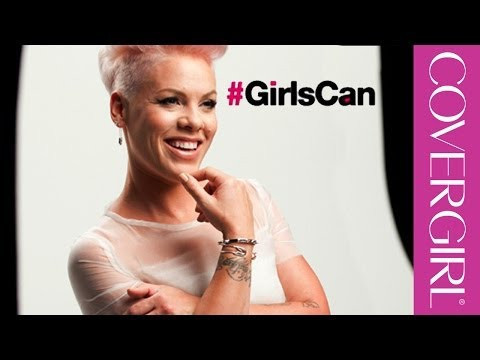E. Kristin Anderson's Blog, page 27
March 8, 2014
International Women’s Week: Guest Post from Amalie Howard: Multifaceted Heroines in YA Fiction
Let’s talk about the writing “strong” female characters phenomenon. As a writer, I enjoy creating multilayered characters, especially characters that show growth over the course of a story. However, I don’t necessarily set out to write a character that is strong (physically and/or emotionally). I try to craft my female protagonist to be intuitively recognizable to my readers—meaning that they can in some way identify with her. She’s tangible and authentic, just as they are. Heroines in books especially for teens become role models, whether we want them to be or not, and I think writers have some responsibility to be conscious of that. People look up to these characters and connect with them, or sometimes, it’s the opposite.
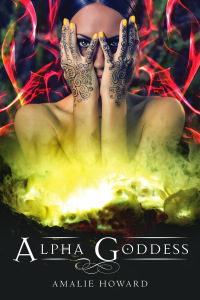
Sky Pony Press, March 2014.
That said, I don’t write to teach or preach—but I would hope that my material would inspire great conversation and/or open doors to communication between teens and parents or within discussion groups. I’m an avid reader of books, young adult books especially, and when I started writing, I knew that I wanted my heroines to be strong (as in independent) but relatable, because their growth in the story has to be believable. As a reader, you have to connect with the heroine and be willing to be a part of her journey. The heroine’s story has to encompass elements that any reader/teen can accomplish, even if they’re not the most powerful witch in the world or a cybernetic super soldier or an alien sea princess. For me, the perfect heroine has to be multidimensional so that readers can find some part of themselves in her.
Since every writer has their own vision of what their heroine is going to be, I can only talk about what I like in my heroines. First off, I’d have to say she would need to have a strong sense of self—she knows exactly who she is (for better or for worse). She has to have confidence, or least gain some along the way through the course of the story. I’d prefer her to be feisty, and have some spunk, but it could turn out to be a front/defense mechanism to hide a fatal flaw. She would be the kind of girl who saves herself, but doesn’t realize that she may also need saving. I like a strong but vulnerable protagonist—one whom the reader can root for when she’s in the middle of a kickass fight scene and empathize with when we start to peel back her layers. Last, but not least, she has to have heart. Some of my favorite heroines are Katniss Everdeen (THE HUNGER GAMES), Hermione Granger (HARRY POTTER), Fire (FIRE), Katsa (GRACELING), Arwen (LORD OF THE RINGS) and Anne Shirley (ANNE OF GREEN GABLES).
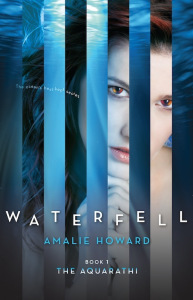
Harlequin Teen, October 2013.
Like all of these amazing, multi-faceted heroines, I wanted to create dynamic characters in my writing who are forced to question everything they are and everything they know. They may be born with special gifts, but learning to accept and use those gifts is part of the challenge. The perfect heroine isn’t necessarily perfect. She’s likeable, she’s funny, she’s smart, she has a lot of empathy, but she also makes mistakes and does stupid, reckless things sometimes. She is not going to give up even when the odds against her to fail are great. In the end, it’s about celebrating who she is, no matter what. She’s a normal person who evolves into someone extraordinary, and that is what makes her strong … it’s the same strength that’s in every girl, the same strength that will inspire all of us women, young and old, to be unique, fierce, and fearless.
That said, not every character is written to be perfect from the get-go. Nerissa from WATERFELL is a ruthless, selfish alien princess who wants nothing to do with her people and her throne. She just wants to live and enjoy life without responsibility. This is a teenage phenomenon. I remember being sixteen and terrified of having to live up to my parents’ expectations. Deflection and an indifferent attitude became my best friends. As a writer, I really enjoy being able to explore the flawed and more real facets of my protagonists, especially early on. After all, it’s not only our strengths that make us heroes, it’s also how we handle and overcome our flaws. Nerissa is not perfect by any means. But she really evolves in WATERFELL to become someone you can respect and believe in—she becomes the queen she was always destined to be. What I love about Nerissa was her willingness to change the things about herself that needed changing. It’s hard to step back to take a long hard look at yourself and find yourself lacking. She evolves from a selfish princess to a queen her people can be proud of. To me, that takes insane courage because facing and acknowledging your imperfections can be terrifying. As a reader, I enjoy when character arcs show that kind of development. The thing is people are flawed. Many of us are not born to be perfect heroines. But that doesn’t mean that we can’t become them. Like Nerissa, we can evolve. Someone once asked me who my favorite heroine was, and my answer was the Phoenix/Jean Grey. I have no doubt she’s had a lot of influence on the character development of several of my heroines. I love that she embodies life and passion, and as a character, she fascinates me because she is so consumed by her own state of being, which is really neither good nor bad. She defines herself.
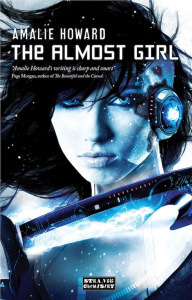
Strange Chemistry, January 2014.
With THE ALMOST GIRL when I was initially doing my character study for Riven (whose name, by the way, means ripped apart), I knew that I wanted her to be fierce. After all, she becomes a legion general of an army at the tender age of fourteen (tender by our standards, of course). She comes from a very tough universe, so she has to be the result of that. In Neospes, there’s no room for softness and emotion. Those are the things that can get you killed. As a result, Riven is the perfect product of her environment. She’s a very intense character. I wanted her to be powerful, highly skilled, focused and mature. A soldier first, Riven is hard on the outside but still vulnerable on the inside—I hoped that readers would relate to her struggle throughout the novel to let go of all her rules and be a girl. We build so many walls to keep from being hurt that we don’t allow ourselves to connect with others. As a character, Riven has to dig down deep to embrace her emotions against everything she has been taught. Highly trained, she knows who she is and what she can do, but she comes to understand how to be judicious and compassionate. That’s formidable.
As a female author writing young adult fiction, I try to draw from my own experience and what I went through as a teenager to make my characters more fleshed out and more complex. It isn’t about writing “strong” female characters (or male ones). It’s about writing REAL ones—making them well rounded with both emotional and physical strengths and weaknesses … making them multifaceted and intricate. It’s about giving them challenges and allowing them to rise to meet those challenges. At the end of the day, it’s not about actual strength—it’s about versatility and resilience. It’s about how these characters respond to the things they come up against and how they are shaped by their experiences. That’s the message I want to convey as a writer to the young people (girls and boys) reading my books. Be brave. Be resilient. Believe in yourself and what you can accomplish. Don’t be afraid to be different—one day you’re going to be happy that you’re the exception and not the rule. And never, ever give up. That’s the hallmark of true strength.
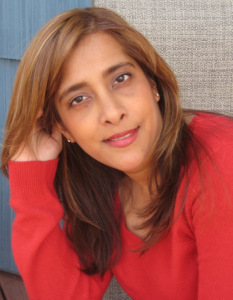
Amalie Howard
Seventeen Magazine Summer Club author Amalie Howard grew up on a small Caribbean island where she spent most of her childhood with her nose buried in a book or being a tomboy running around barefoot, shimmying up mango trees and dreaming of adventure. 22 countries, surfing with sharks and several tattoos later, she has traded in bungee jumping in China for writing the adventures she imagines instead. She isn’t entirely convinced which takes more guts.
She received a bachelor’s degree from Colby College in Maine in International Studies and French, and a certificate in French Literature from the Ecole Normale Supérieure in Paris, France. Traveling the globe, she has worked as a research assistant, teen speaker and sales executive. She currently resides in New York with her husband and three children.
She is represented by the Liza Royce Agency. Visit her at www.amaliehoward.com or on Twitter @AmalieHoward.





March 7, 2014
International Women’s Week: Guest Post from Susan Froetschel: Strong Women Across Cultures
Readers and reviewers have long hailed “strong” female characters – a term applied to women who are athletic, smart, opinionated, empowered, impulsive, adventurous and influential over other characters. The quest for “strong” women led to inevitable caricatures and unpleasant stereotypes while eliminating some of the world’s most intriguing women and cultures.
Actresses were quick to resist the label. “Two phrases I hate in reference to female characters are ‘strong’ and ‘feisty,” said Helen Mirren in 2010, in an interview with James Rampton. “They really annoy me. It’s the most condescending thing…. It infantilizes women.” And Meryl Streep, during an interview on 60 Minutes, pointed out: “No one has ever asked an actor, ‘You’re playing a strong-minded man…’ We assume that men are strong-minded, or have opinions.”
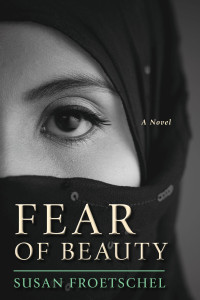
Seventh Street Books, January 2014.
Melissa Silverstein and Inkoo Kang bid a vehement “Goodbye to Strong Female Characters” for Women and Hollywood. They supported the notion of “strongly written” female characters, fretting that “the problem is no one knows exactly what that means anymore.” They proposed “agency” as a better goal, yet admitted that had its drawbacks, too. Earlier, The Literary Snob also recommended agency for female characters, along with relatability, integrity and motivation: “The character makes things happen. They move the plot forward. They make choices — even if they are bad ones — that propel the story. They make a difference. They do not wait for the story to happen to them. They do not wait to be rescued.” And a decade earlier in an academic journal, Honor McKitrick Wallace suggested that for the female protagonist, “narrative desire may simply be a desire for agency.”
But once again, “agency” would still eliminate the most vulnerable women and men, especially in the world’s least developed nations where the basic social tools that presumably might support development of character traits and skills – including education, free speech and an independent and active media, a fair system of justice, transportation and freedom to relocate to more progressive communities – are not available.
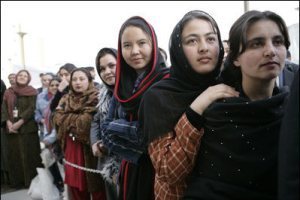
Women waiting in line in Kabul. (Creative Commons.)
This aversion to “agency” is raised by Kathryn Hemmann of Contemporary Japanese Literature: “I deliberately avoided the term ‘empowerment,’ just as I deliberately avoided the term ‘agency’ …. I don’t think a character needs to be powerful or exceptional in order to be well written and compelling.” She points out that definitions for words like “strong” or “agency” can vary wildly and offers her own recommendations for developing strong characters, male or female, and includes “interiority” – thinking and reasoning.
In addition to the experiences provided by families and parents, the stories we read or hear or play out as children shape our thinking about gender roles. More than a decade ago, Sherron Killingsworth Roberts categorized 140 Newbury Medal and Honor books, from 1922 to 1996, and identified three female characters who rescue males. Her categories focused on locus of interior control including creative reasoning or intellect, physical means or tools, cooperation or compromise as well as exterior locus of control such as unrequested intervention from other characters. The three female rescuers she identified each fell into the archetypal mother role, and she notes “acknowledging the archetype of mother in heroic acts may reduce women back to the stereotypical female who constantly takes care of others, rescues them, and never takes care of her own needs.”
Since her study, another trend among the Newbury books has emerged among the male and female protagonists: self-rescue via awareness and transformed attitudes. McKitrick Wallace identified that trend in other areas, pointing out that a first step for female protagonists in challenging conventions may be a “move from stasis to action” because “Recognition and articulation of one’s desire can be a quest in and of itself…” Readers must practice diligence in discovering female protagonists because it’s not uncommon for women and female protagonists to be a minority in lists of top literary novels. And organizations like Sisters in Crime monitor book reviews and awards for gender inequality.
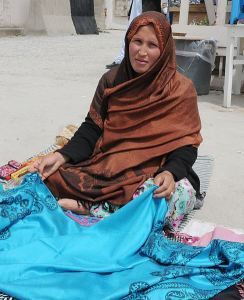
An Afghan woman vendor. (Creative Commons)
Every experience, every story we read or hear, carries potential to shift our identity which in turn can shift the direction for an individual or community – the caricatures or sheer absence of women or other members of society can be as influential, too, inviting reactionary responses. “The search for identity emerges as a dominant motif, exemplified in the construction of a model of gendered subjectivity combined with a self-conscious appeal to a notion of oppositional community,” wrote Rita Felski in Beyond Feminist Aesthetics: Feminist Literature and Social Change.
This is the true power of globalization as it expands and shifts our experiences and forces its constant questions about our way of life. Globalization of travel, communications through the internet and literature, connects the independent with the vulnerable, raising awareness of new possibilities and the problems with unworkable traditions. In “A Feminist Approach to Narrative, “ a chapter in Narrative Theory, co-author Robyn Warhol notes, “The more we can understand about narrative’s role in the constitution of gender, the better positioned we are to change the oppressive ways that gender norms work in the world.”
Yet despite globalization’s never-ending flow, more often than not, it’s much easier to see and question the traps and obstacles awaiting women of another culture rather than our own. I touch on this disconnect in my fourth book, Fear of Beauty, a thriller set in Afghanistan. Two Muslim women, one American and the other the Afghan protagonist, converse:
My mother grew up in Bangladesh. I was born in America and went to school there. She’s Muslim and so am I.
Muslims in America? You hide your faith?
She laughed and in awkward Dari talked about Muslims mixing with others in villages, schools, and business. They worked as doctors, teacher, and bankers. It was hard to believe. You like it there?
Mita smiled. Very much, it’s open and free….
It’s that way here, too. She looked startled, and I explained. “We’re free to grow what we want. We work hard, and our families are comfortable.
A challenge for writers is exploring cultural differences and developing a character is both vulnerable yet drives the plot, while both relishing and questioning her culture and way of life. Fear of Beauty is the story of Sofi, a rural Afghan woman who is desperate to learn how to read after the death of her oldest son. This character is curious, observing others. She works hard and must forgo credit so as to avoid the resentment of others. She must work in secret, at great risk, to pursue her own interests. She lives in a community that senses and fears rapid social change. She is a devout Muslim but has questions and her own interpretations once she starts reading. She raises five sons who love their mother, but do not view her as a decision-maker.
Reading and writing such stories can rouse us from our everyday routines and notions, revealing new sources of hope and ways of living. With every new story and experience, we are free to change or embrace how we think about our lives.
The character, Sofi, in my most recent novel is the product of my imagination, but I hope such characters operate quietly in every community. One day they are ordinary and overlooked, and the next they question the most basic of routines or customs that others take for granted. No one is more amazed by the transformation of spirit than the character herself. Sofi is the opposite of the “strong” female protagonist of many modern tales in that her reactions to circumstances drive the plot. Yet she does much more than survive. And I would daresay that, given her challenges, this woman from a tiny rural village in Afghanistan is stronger, smarter – more innately determined, independent and courageous – than many of her cosmopolitan counterparts.
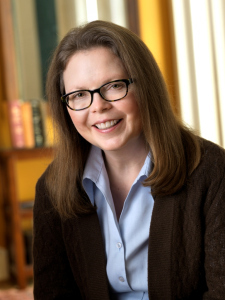
Susan Froetschel.
Susan Froetschel is the author of four mystery books that focus on parenting and social issues. Her most recent book is FEAR OF BEAUTY, which was nominated for the 2014 Mary Higgins Clark Award by Mystery Writers of America. She has worked for YaleGlobal Online, which covers globalization, since 2005.





International Women’s Week: Guest Post from Martha Wells: Rewriting My Childhood
I grew up in the 70s desperate for books. I was unhappy at home, and felt unwelcome and weird at school, and I turned to books like an addict to heroin. Like I needed books to get oxygen. (It wasn’t until I grew up that I found out there were a lot of other people who felt exactly the same way as I did, but at the time I felt very alone.)
I read through the children’s section of the Fort Worth Public Library and found a lot of wonderful books. (Though a perennial problem in the underfunded branch we went to was missing volumes in series, especially first volumes. There was little money to replace lost or destroyed books. The Chronicles of Prydain are different when you have to start with THE BLACK CAULDRON instead of THE BOOK OF THREE.) But one thing that was thin on the ground back then was female protagonists in adventure stories.
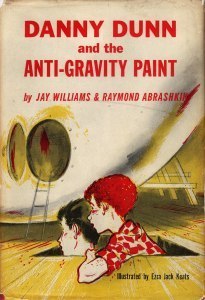
McGraw-Hill, 1956
Even back then, before I had any idea of growing up to write it, I loved fantasy adventure. I bounced off books like THE HARDY BOYS and NANCY DREW, though I don’t know why. I just especially loved fantasy or science fiction adventures with problem-solving or mystery components, the characters exploring strange places or solving supernatural mysteries. I loved haunted house books and ghost stories. I found plenty of books and often extended series with boys going on adventures with scientist or adventurer father figures (like the Danny Dunn series), or family adventures like the Partridge Family‘s tie-in books, or lone boys running away to live in remote places, and one great one with a group of boys who stumbled on a flying saucer/time machine from the future. I loved the Green Knowe books by Lucy M. Boston, and THE HOUSE OF DIES DREAR by Virginia Hamilton, and THE GHOST OF FIVE OWL FARM by Wilson Gage (Mary Q. Steele).
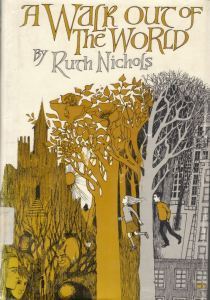
Ace, 1969
But there were few girl protagonists. If girls were along, much of the time they were either the antagonist baby sitter or the sweet biddable baby sitter or the Load. (Load = the character who exists to get hurt and be carried by the other characters, as defined by Mystery Science Theater 3000.) And it’s telling that in many of those books I can remember the male main characters and their male best friend sidekicks, but I can’t remember what the girl characters did, if there were any. It was a relief just to find a girl who had a best friend/sidekick role and helped solve the mystery.
There were more girl protagonists in non-F/SF mysteries, and message books about how we should appreciate our mothers even if they don’t believe in Christmas, and so on, but this was long before librarians created the YA section. It made me appreciate the few series and books with more adventurous female protagonists, books like A WALK OUT OF THE WORLD and its darker sequel THE MARROW OF THE WORLD by Ruth Nichols. There were probably a lot more out there that I didn’t find, but as a kid, I didn’t have a lot of options to search for books. This was long before the internet and any other sources where kids can get books recommended to them. I was too shy to speak to the librarians, and already trained by that point to assume that no adult would be interested in answering my questions, or would want to find books for me.
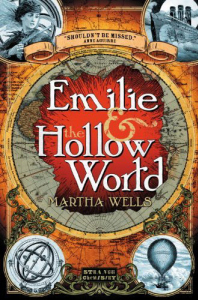
Strange Chemistry, April 2013.
This was one reason I ended up in the adult SF/F section. There were books there with women protagonists, though often they were a little too adult for my age. I discovered writers like Tanith Lee and John Varley way too early. Fortunately I also discovered Andre Norton, who wrote about lots of adventurous women, both as main and secondary characters.
So all this is basically why I wanted to write the Emilie books. We know now that representation of women, of POC, and LGBT characters in MG and YA books is important. But I don’t think we’ll ever really understand the real long term effect of not seeing people like you in the books that you live your life through, that give you the strength to go on, that form the only mental bulwark against a cold angry reality for so many kids. I know I was basically raised to see myself as a secondary character in my own life, and what that did to me. I have no idea how much worse it must be to see yourself as completely absent.
So when I wanted to write a couple of novels for younger readers, I made the protagonist a young girl who was starting out on her first adventure with nothing but a taste for reading novels to help her. I made her brown instead of white, thinking of some hypothetical kid who will see herself in Emilie. But I was mainly thinking of me, and the books I needed to read when I was that age.
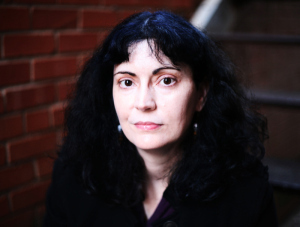
Martha Wells.
Martha Wells is the author of a number of fantasy novels, including THE CLOUD ROADS, THE SIREN DEPTHS, THE WIZARD HUNTERS, WHEEL OF THE INFINITE, and the Nebula-nominated THE DEATH OF THE NECROMANCER. Her YA fantasy, EMILIE AND THE HOLLOW WORLD, was published by Angry Robot/Strange Chemistry in April 2013, and the sequel, EMILIE AND THE SKY WORLD, will be out in March 2014. Her next fantasies will be a two-volume collection of novellas set in the world of the Books of the Raksura series, out in September 2014. She has had short stories in Black Gate, Realms of Fantasy, Stargate Magazine, and Lightspeed Magazine, and in the anthologies ELEMENTAL, THE YEAR’S BEST FANTASY #7, TALES OF THE EMERALD SERPENT and THE OTHER HALF OF THE SKY. She has essays in the nonfiction anthologies FARSCAPE FOREVER, MAPPING THE WORLD OF HARRY POTTER, and CHICKS UNRAVEL TIME. She has also written media-tie-in novels, STARGATE ATLANTIS: RELIQUARY and STARGATE ATLANTIS: ENTANGLEMENT, and a Star Wars novel, EMPIRE AND REBELLION: RAZOR’S EDGE.





March 6, 2014
International Women’s Week: Sarah Yi-Mei Tsiang: Voices of the Internet vs. Women
The Internet seems like the perfect democratizing tool, doesn’t it? Touching nearly every corner of the world, the Internet is one large, constantly evolving mass of different everything: opinions, world views, histories, sexual preferences.
And yet, the Internet has also become a place that feels more and more hostile to women, particularly women with an opinion. The lack of censorship paired with the cover of anonymity has meant that women who speak up are more often than not threatened with rape and general violence, belittled, and otherwise bullied. When Anita Sarkeesian dared to talk about sexism in video games, she became the focus of an organized online attack that wherein all of her “social media sites were flooded with threats of rape, violence, sexual assault, death” (Sarkeesian). There was even game created where users could click on a picture of Anita’s face and have her progressively bloodied and bruised. Even women who simply present factual and seemingly uncontroversial material are subject to constant and dehumanizing scrutiny. Take Emily Graslie, a scientist who hosts “Ask Emily” on the web for the Field Museum. The list of sexist and sometimes threatening comments that she pulls out as an example of what she deals with in her day to day work is both shocking and dispiriting.
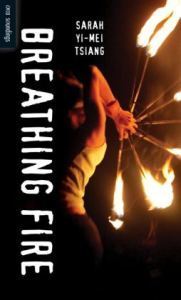
Orca Books, March 2014.
The beauty and the horror of the Internet is its power of connection. Everything posted, tweeted, and updated has a potentially vast audience, all of whom are equally able to respond in their own right. The Internet is not only a repository of hate, but it is also a perfect cover for the bully and the faceless mob. I have an eight year daughter and what frightens me more than the specter of the stranger on the street or the van with the tinted windows is the laptop on which I do all my writing. Remember when our mothers told us about stranger danger and the familiar ploys of “help me find my puppy” and “come have some free candy”? I can’t even begin to name the ploys, traps, and horrors that lurk on the Internet, where my daughter doesn’t even have to leave her home to stumble across violent (and most often gendered) hatred when searching for music she enjoys.
I worry that the first time she voices an opinion on the Internet she’ll the receive the same treatment that millions of other women have received – that she’ll be called stupid, or a slut, or that there will be a long thread of opinions on her physical appearance. Objectification has taken on a new life, and I worry that the constant beam of the male gaze will become the only lens that girls and young women will be able to see themselves through. I worry that at the moment when she should be developing her voice, she’ll also be hit with the full force of patriarchy in its most heinous form. How do we keep our daughters from being silenced?
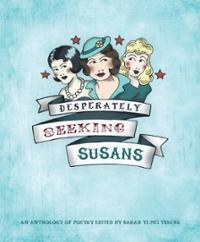
Oolichan Books, September 2012.
I’ll try to shield her from the Internet as long as I can. I’m in the process of building her an armor of books. My daughter loves to read, and in reading books she can look to the empowered female heroes who live in a million different worlds. She can read these books and finish them without having a scrolling line of vitriolic comments inscribed at the end of every chapter. I remember so clearly being 12 years old and discovering Atwood, and Munro, and a host of other incredible female writers. I remember being totally engrossed by the struggles of Ayla in the Clan of The Cave Bears. I could picture myself as being the kind of girl she was – a survivor. It’s hard to be something without being able to imagine it first.
I am heartened by the books that are constantly being written by empowered, intelligent women who feature heroines that are whole people: smart, vulnerable, fierce, compassionate, and determined. I have books waiting in the wings by authors like Leanne Lieberman and Emily Pohl-Weary so that my daughter can always be surrounded by characters that are more real than the air-brushed models who constantly smile down at us and the angry YouTube commentators who constantly judge, threaten, and demean us.
I know that I can only shield my daughter for so long before she will have unlimited access to everything, good and bad, that the Internet has to offer. The best we can do as parents is to build our children up, to arm them with knowledge, confidence, and morality. I’m glad that I have the best authors in the world, and a slate of brave and confident heroines as part of my armory.
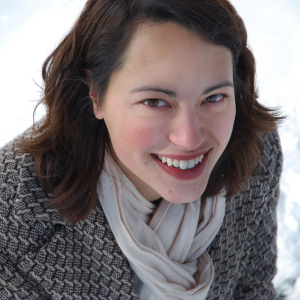
Sarah Yi-Mei Tsiang.
Sarah Yi-Mei Tsiang is the author of the poetry books STATUS UPDATE (2013) and Gerald Lampert award winning SWEET DEVILRY (2011). She is also the author of several children’s books, including A FLOCK OF SHOES and WARRIORS AND WAILERS. Sarah’s work been published and translated internationally, as well as named to the OLA Best Bets for Children 2010, Best Books for Kids & Teens 2011 & 2012, and the Toronto Public Library’s First and Best Book List (2012). She is also the editor of the anthology DESPERATELY SEEKING SUSANS, and the forthcoming TAG: CANADIAN POETS AT PLAY. Her new Young Adult novel, BREATHING FIRE is forthcoming this March (2014) with Orca Books. She’s proud to have fierce female characters in her writing.





International Women’s Week: Guest Post from Margi Preus: Norwegian Girls Do the Rescuing
There were times while I was writing WEST OF THE MOON, or more accurately, researching it, when I felt as if I was walking through fairytale forests. In the first, the leaves are all made of silver, in the next, they’re made of gold and in the third the leaves are made of pure diamonds. Like the fairy tale character, I really had no idea of the places I would go or the things I would learn and discover on my journey to write this story.
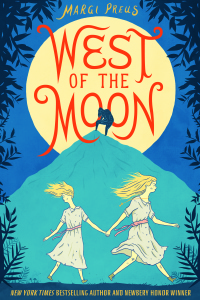
Amulet Books, April 2014.
The journey started, as they often do, with a little pestering. Some of my relatives seemed to think that the diary of our mutual ancestor—my great-great grandmother Linka Preus who emigrated from Norway to America in the 1850’s—would make a good novel. Her diary has been published twice, in two separate translations, and it is an interesting story. But not that interesting. Not interesting enough to make a novel, in my opinion, without adding in some high-speed horse and buggy chases, shipboard mutinies, or something.
Dutifully reading her diary anyway, I came across one tantalizing paragraph that clung to my cerebral cortex like an invasive vine. Linka is newly wed and on board a sailing ship bound for America when she writes, “I went back downstairs again, bringing with me a pretty farmer girl, Margit, whom Herman and I had thought about taking as our maid . . . I said that I knew she was alone and that she did not have anyone to support her, and if I could do her a favor by engaging her, then I would do it.”
Hold the phone. Did she say, “I knew she was alone and did not have anyone to support her?” What kind of crazy—or desperate—girl would travel all by herself to a country where she knew no one, probably didn’t speak the language, and had no prospects?
Here was a story, it seemed to me, even if I had to make it all up. Which, for lack of any further explanation in the diary, I began to do. Like my protagonist, Astri, I set off for parts unknown. And, like the fairy tale heroines who are given golden apples or magic tablecloths, I was given many helpful gifts along the way. Not surprisingly, most of these gifts came from women.
First, from my great-great grandmother came this gift of a diary, which provided a helpful record of life on board an immigrant ship, not to mention a ready-made secondary character in the form of the parson’s wife, with dialog straight from the diary.
Traveling on, I stumbled onto Kathleen Stokker’s REMEDIES AND RITUALS: Folk Medicine in Norway and the New Land, which introduced me to the murky 19th century world of religion mixed with superstition, as well as to the BLACK BOOK, a slightly scary book of cures, spells, and curses that was used in Norway by kloke koner (wise women) healers from the 1600’s into the early 20th century. These books took me down paths I would never have envisioned at the start.
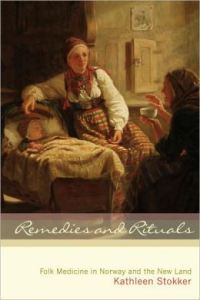
Minnesota Historical Society Press, March 2007.
And finally, there were the folk and fairytales that so influence Astri and her story. These were stories I knew from childhood when my father would read from an old collection by Asbjørnsen and Moe, translating as he went along. I have my father to thank for telling them to me, but I have to thank the old Norwegian storytellers, who I am pretty sure were women, for telling them in the first place.
Like Astri, the girls in these fairytales do a lot of the rescuing. One girl travels three days past the end of the world to save the prince, another weaves a dozen shirts and ties out of thistledown to save her brothers. Or, if the girl is the one who has been captured by trolls, she calmly sits and scratches the many heads of her captor until such time as a ragamuffin lad shows up to rescue her. Even then, the girl facilitates the process, giving the rescuer detailed instructions to “take a draught from the troll’s drinking flask” before wielding the sword that will cut off his heads.
Apparently it wasn’t just fairytale girls who were so clever and independently minded in Norway. My own great-great grandmamma, on the eve of her wedding in 1851, wrote, “How could I ever forget thee, Independence, whom I so dearly love! Yet this evening I shall take leave of thee. That a spark of affection for thee will always smolder within my heart, I have no doubt. . . I am too stubborn to agree that the maiden shall give no thought to Independence. A human being is a free and independent creature, and I would recommend that every woman consider this, and I insist that every maiden owes it to herself to do so . . . Rarely will it be to her disadvantage if she combines it with determination and self-confidence.”
In reading the letters and diaries of other Norwegian immigrant women, who in the 19th century were second class citizens like women in most other places, I noticed this same kind of determination and independence. Where did these attitudes come from? Did the tales they heard as girls have anything to do with it?
I picture an old crone sitting by the fire on a cold winter’s night back in the old country. She is spinning stories to the young dairymaids clustered around her, telling them stories of girls who are independent, determined and self-confident. And in telling these stories, she encourages these attributes in the girls themselves. Perhaps they will grow up to become girls who rescue, if not princes, then their own selves. Perhaps they will be the very girls who, in order to fulfill their destinies, pluck up their courage and set off for faraway places, far off across oceans, even to places that lie east of the sun and west of the moon.
A few of the stories that the old crone might have been telling:
East of the Sun and West of the Moon
White Bear King Valemon
The Golden Castle that Hung in the Air
The Three Princesses in the Mountain in Blue
Soria Moria Castle
The Twelve Wild Ducks
The Squire’s Bride
The Mastermaid
Katie Woodencloak
The Three Aunts
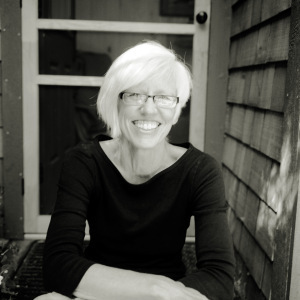
Margi Preus.
Margi Preus has written many popular plays, picture books, and novels for young readers. She has traveled the globe to research her novels and, along the way, has made friends in Japan, Norway, and many other places. She lives in Duluth, Minnesota. Visit her online at margipreus.com.





March 5, 2014
International Women’s Week: Guest Post from Robin Herrera: On “Being a Woman”
Growing up, I never really felt like I was “good enough” at being a woman. I was a late bloomer, and when you combine that with the fact that I was one of the youngest people in my class, then you’ll get an idea of the weird, short, flat-chested, unhygienic kid I used to be.
Even now, I don’t feel like much of a woman. I still don’t wear makeup, and it’s hard for me to muster up the energy to care. (Yes, even when people tell me I’d look “pretty” with makeup.) I hardly ever shave my legs, and when I do, I miss so many spots that you can’t even tell that I even tried. And unlike a lot of my girlfriends, I don’t like dancing or going out to clubs. I prefer my bars to play music at a level I can easily talk over. Is that so much to ask?
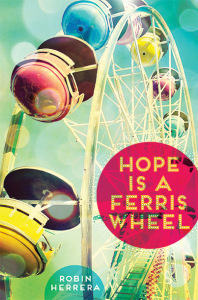
Amulet Books, March 2014.
Luckily, now that I’m a full-fledged grown-up with bills and a cat to take care of, I’m not interested in fitting into the societal idea of being a woman. Especially since I’ve found out that the whole idea is a bunch of baloney. Being a woman, or a girl, is simply that. There are so many valid experiences, and not all of them include makeup, or periods, or clubbing. Sometimes they include a girl who buys fingernail polish only because she likes the way it looks in the bottle, and not because she ever wants to wear it. Instead, she uses it to paint eyepatches and mustaches on movie posters with her best friend, and then accidentally gets high on the fumes and ends up tossing nail polish into the street to create beautiful splatters. (That was me, if you were wondering.)
When I began writing, I wanted to write about the girls who didn’t quite fit the societal mold of “girl.” That mold is outdated, anyway. And no, it’s not a bad thing to want to fit the mold. It is a bad thing that there are so many people who can’t, though, and who are punished for it.
I mean, it’s hard enough being a girl. Girls are still told that they aren’t good enough – it’s just in more subtle ways. “Being a girl” is still an insult, while “taking it like a man” is supposed to be a compliment. Most media is still dominated by men, as if women are a second thought at best. Double standards abound – boys will be boys, but when do we ever say that girls will – or even can – be girls?
Not nearly enough.
As a writer, I want to combat that. And here’s what I tell myself in order to do that:
There are no rules for girls. (There are also no rules for boys!) A girl is a girl if I say she’s a girl, not if she wears a sparkling necklace or obsesses about boy bands. I do not judge a girl by her actions. However I write a girl character, there’s bound to be a girl like her somewhere in the world.
There are no roles that aren’t for girls. When I write, I often ask myself if this role could be a girl. I learned this from watching movies, actually – from seeing background characters who were predominantly male. Why can’t the mad scientist character be a girl? Why can’t her minions be girls? Why can’t the seedy landlord be a girl? No reason at all.
There is no single “girl experience.” Being a girl isn’t about getting a period and developing breasts, though for some girls it is. When I write, I ask myself: what is this girl’s experience? How will it shape her as she becomes a woman? Sometimes the answer doesn’t fit into the societal girl mold, and that’s okay! Sometimes the answer is more universal, and maybe resonates more with boys, and that’s okay, too!
Girls are complicated because people are complicated. Girls are multi-faceted and contradictory. I hate my body and I think I’m pretty. Sometimes I have both feelings at once. It’s contradictory, but I still feel that way.
Girls aren’t perfect. Girls are flawed, whether they know it or not. All my characters are flawed, and if they don’t know it, that says something about them. If they don’t know it, that says something else, doesn’t it?
One girl is never more important than another girl. If all girls’ experiences are valid, how can you value one experience more than the other? A girl who puts down other girls – because they’re “vapid,” maybe, or “slutty,” or maybe just “feminine” – isn’t being forward-thinking, she’s being a jerk.
(I think these could work for other genders as well, with some word swappage.)
Writing really isn’t that hard, but writing convincingly is. To all the girls in the world, I hope you find a bit of yourselves not only in my stories, but in all stories. And if you don’t, I hope you become writers and share your experiences with the world.
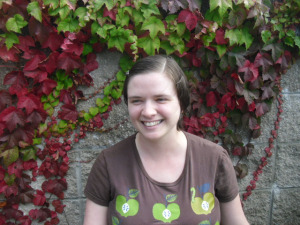
Robin Herrera. (Photo by Elysia D. Willis.)
Robin Herrera is an aspiring cat lady living in Portland, OR. She has a BA in English from Mills College as well as an MFA in Writing for Children and Young Adults from Vermont College of Fine Arts. Her debut novel, HOPE IS A FERRIS WHEEL, comes out March 11th from Amulet Books. While no longer flat-chested, she is definitely weird, short, and unhygienic. Find her online at www.robinherrera.com or on Twitter @herreracus.





International Women’s Week: Guest Post from Rachel Neumeier: Genre Girls are Doing It
From time to time, I get into a conversation with another woman, a librarian or a teacher or another writer or a dedicated reader who gets through more genre fiction in a month than I do in a year. So of course we talk about books – about what we’re reading now, or what titles most impressed (or disappointed) us in the past year; about the ending to The Hunger Games trilogy or whether the basic mystery in THE GIRL WITH THE DRAGON TATTOO was actually obvious all along; about our favorite under-appreciated authors and how much more they deserve notice than the current hot name in fiction. All those things.
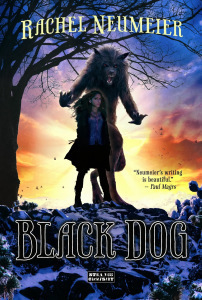
Strange Chemistry, February 2014.
And one thing that comes up more than occasionally is the poor representation of female SFF writers, or female protagonists, or strong female characters, in SFF fiction when we were growing up. This always takes me by surprise, because that was not my experience at all. I wonder what the defining decade might have been, where this changed? Or whether the difference might perhaps be regional? Either way, I look back on the books that shaped my taste as a reader, and who do I find back there? Patricia McKillip. Robin McKinley. CJ Cherryh. Lois McMaster Bujold. Barbara Hambly. Those are some of the authors who taught me to write by their example. There are guys in that list, too. Tolkien, I suppose, though I read that so early that I don’t remember ever having not read it. Guy Gavriel Kay. But there are more women than men. Not that I noticed that, or cared, when I was in high school.
As I recall, when we were kids, my brothers and I didn’t really notice authors unless we’d already fallen in love with their work, and certainly didn’t pay any attention to a writer’s gender. What kid does? You hear a certain amount these days about boys not wanting to read books with a girl protagonist, and looking back on it, I . . . can’t see that at all, in my family. True, mine was the kind of family where everyone helps with the dishes and everyone helps mow the grass. But it still takes me by surprise when I find out someone else’s experience was dramatically different, that their parents or teachers or peers cared about the gender of the protagonist or (even more so) the author. Seriously?
Mind you, I don’t argue that there is a general message out there that girls are not as good as boys, because somewhere or other I must have absorbed that message. I definitely remember going through a stage where I avoided pink as “girly,” and certainly I never even glanced at dolls. I liked being a “tomboy”. It might have made a difference that I had two brothers and no sisters; I expect things would have been different if I’d had a big sister who liked girly things. As it was, it took years for me to decide that avoiding pink was crazy. What did I care what other people thought? I believe I was in graduate school by that time, so as I say, it took years.
Now I have half a dozen shirts and blouses in different shades of pink, and different shades of pink earrings to go with them. I admit, it doesn’t hurt that pale pink is one color that doesn’t show pet hair all that badly – did I mention I have six Cavalier King Charles spaniels and a large, irascible cat? – but I would wear pink anyway. Because I like pink.
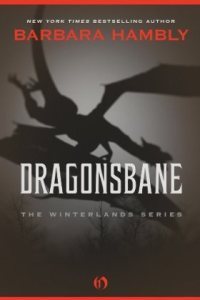
Open Road Media, Ebook Edition, March 2011.
But when I was growing up, I never once was worried by the lack of strong female characters in SFF. Because look at them all! Maire in MacAvoy’s THE GREY HORSE, with “a punch on her like the kick of a horse.” Or Martha Macnamara in her TEA WITH THE BLACK DRAGON, one of the few older female protagonists in SFF, not physically intimidating but definitely strong as a character. Jenny Waynest in Hambly’s DRAGONSBANE, who is forced to choose between magic and love, and chooses magic.
I have no problem looking back at works that permanently influenced my taste in books and finding wonderful female characters that run the whole gamut, from girls and women who are strong in traditionally masculine ways (Harry in McKinley’s THE BLUE SWORD, Elli Quinn in Bujold’s Vorkosigan books) to girls and women who are far more feminine (Raederle in McKillip’s Riddlemaster trilogy, Lissar in McKinley’s DEERSKIN). And female protagonists who step way outside the normal parameters of human behavior because they’re not human, as in the outstanding Chanur series by CJ Cherryh – Cherryh clearly was thinking about lion behavior when she created the hani, which leads to a society with distinctly different sex roles than any human society.
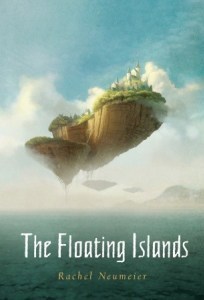
Knopf Books for Young Readers, February 2011.
I don’t think anyone falls in love with a story harder than a teenager; I think your reading during those years permanently shapes not only your literary taste, but also your view of the world and how people should act. I’m grateful for the wide variety of wonderful books I had available back then. And, though I hope all the titles I loved are still in libraries everywhere, the selection of modern YA (and adult SFF, for that matter) seems to offer just the same wide selection of excellent female characters. For example, Elisa in Rae Carson’s THE GIRL OF FIRE AND THORNS, or Beka Cooper in Tamara Pierce’s recent trilogy. Or Blue Sargent in THE RAVEN BOYS by Maggie Stiefvater, now there’s a wonderful story. Despite the name, there is a female protagonist and a good handful of important female secondary characters, and every single one is beautifully drawn.
And I hope that every now and then someone picks up a copy of one of my books, either the YA or the adult fantasy, and finds in my stories strong, complex, relatable female (and male) protagonists. It certainly made me very happy when Kirkus included THE FLOATING ISLANDS in its best-of-the-year list for both best boy protagonist and best girl protagonist.
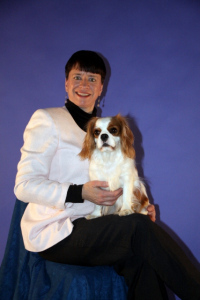
Rachel Neumeier.
Rachel Neumeier started writing fiction to relax while she was in graduate school; her only prior publications appeared in journals such as the American Journal of Botany. When she placed her first Young Adult fantasy novel with Random House, she instantly stopped thinking of writing as a hobby and started thinking of it as a Real Profession. Her seventh book, BLACK DOG, just hit the shelves in February 2014. Rachel now lives in rural Missouri with a large garden, a small orchard, a large irascible cat, and a gradually increasing number of Cavalier King Charles Spaniels.





March 4, 2014
International Women’s Week: Guest Post from Michaela MacColl: Which feminist? Charlotte or Emily Bronte?
International Women’s Week makes me think that I should be writing a feminist manifesto about my characters or my books…. But that really isn’t my style. My own feminism is pretty quiet– it never occurs to me that my opportunities are limited by my gender (by lack of interest, ability or finances, sure!). I’m indebted to all the women who broke down barriers before and made it possible for me not to have to worry about it. As a writer, I’m particularly fond of the women writers from the 19th century who wrote exciting and innovative stories or poems at a time when women were not expected to do such outrageous things. Emily and Charlotte Bronte, Emily Dickinson, Louisa May Alcott — they didn’t have the framework of feminism to shape their ideas, but their work speaks for their confidence and their bravery.
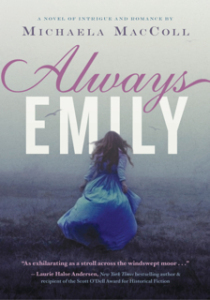
Chronicle Books, March 2014.
Most recently I’ve explored the always fascinating Bronte sisters. My latest novel, ALWAYS EMILY, has Charlotte and Emily Bronte solving a mystery on the moors. When I was writing it, Charlotte and Emily competed on every page for Main Character. As you can tell from the title, Emily won – but I loved them both.
Emily was a better character for my story – impetuous, passionate and mesmerizing. Much like her famous character Catherine in WUTHERING HEIGHTS – you don’t necessarily like her – -but you can’t take your eyes off her.
But I still have a sneaking preference for Charlotte. I relate more to her pragmatic, down-to-earth practicality.
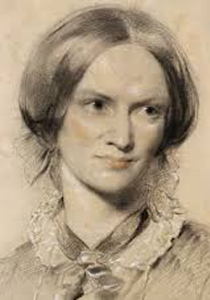
Charlotte Bronte.
At the age of ten, Charlotte lost her two older sisters. Suddenly, she was the eldest. She internalized that terrible responsibility and it drove all her actions until the end of her life. She was bossy and sensible and despaired of ever getting her zany family to face financial facts. Her father was a poor minister and his only income was her salary. The family house came with the job. It was small and remote, at the very edge of the moor, but it was the only permanent home that the sisters ever knew. If anything happened to Rev. Bronte, the Bronte kids were destitute and homeless. Charlotte had been writing since she was a child, but as an adult, she decided to write for money. It seemed the only alternative to a life of drudgery as a teacher or governess. She wanted the same for her sisters Emily and Anne.
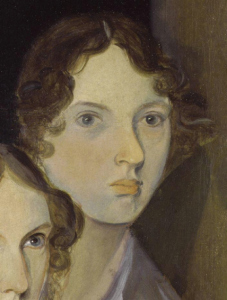
Emily Bronte.
Emily wasn’t worried about finances. So long as she could wander the moors and have her animals (including a giant hound and a hawk named Nero), she was happy. She was furious when Charlotte snooped in her desk and discovered her wild and original poetry. She had no interest in writing for publication. When she wrote her only novel – it was a story of doomed passion, drunkenness, blackmail, seduction and violence. She lived in a mental whirlwind of her own creation that had little grounding in reality.
Anne, the youngest, and most overlooked sister was the only one who did manage to earn her living as a governess for a time.
Charlotte convinced her sisters to publish a book of poetry at their own expense. Self-publishing was more expensive in those days. The published under androgynous pseudonyms to avoid the stigma of being “lady poets.” Charlotte was Currer, Emily was Ellis and Anne was Acton. The poems were well received, but financial success proved elusive. They sold exactly two copies.
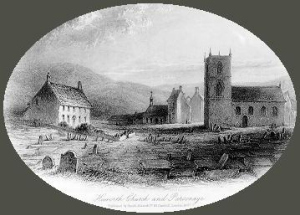
Haworth Parsonage, where the Brontes lived their whole lives.
Charlotte pushed the sisters to write novels, hoping the renumeration would be better. She eventually published JANE EYRE, the story of a penniless governess who wins the love of the enigmatic Mr. Rochester. Charlotte rooted her story in her own experiences, particularly the depiction of Jane’s cruel boarding school which was based on the school that caused the deaths of her two older sisters.
JANE EYRE is such a beloved novel, it is difficult for the modern reader to appreciate how much Charlotte’s novel defied conventions. It was the first novel featuring a female protagonist speaking in her own intensely first-person voice. And did she speak. Jane is honest about her passionate nature and the feelings she harbors for her employer. It was shockingly original. Everyone wanted to know who Currer Bell was and invite him (or her!) to dinner. As it turned out, when Charlotte came out as the author of JANE EYRE, she was a terrible dinner companion, preferring to whisper genteely in the corner with the governess than to scintillate in the salons.
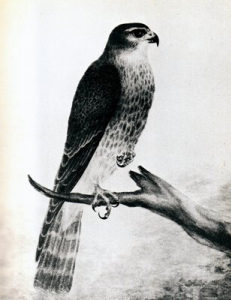
Emily’s Hawk “Nero” (painted by her).
WUTHERING HEIGHTS was successful as well, but its story of doomed love and revenge was considered brutish and amoral. Her narrative structure was innovative and complex. (And how she did it with only a pen and paper – I can’t imagine!) Everyone wanted to know who Ellis Bell was so he (or she!) could be publicly disgraced.
Anne had used her time as a paid employee in a family to write a searing expose in novel form of the way governesses were exploited. Her second novel was a sympathetic portrait of a woman fleeing an abusive husband which is considered one of the first feminist novels. Neither of her novels received the same attention as her older sisters’ which is a shame because in her quiet way, she was just as innovative as they were.
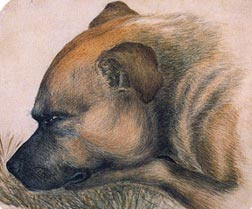
Emily’s dog “Keeper” (painted by her).
After Emily’s untimely death at the age of 30, Charlotte wrote a forward for a reprint of the novel, apologizing for its crudity. She didn’t understand how modern it was and certainly she didn’t foresee its staying power.
So which feminist do you prefer? Emily – the wild spirit who wrote exactly what she wanted and damn the critics? Or Charlotte, who wrote from her own experiences, laying her soul out on the page, but kept her novel just the positive side of respectable – with an eye to sales? I would give the prize to Charlotte because I think she revealed more. But then I would take it back because Charlotte tried to muzzle Emily after Emily’s death.
The point is that these original ladies wrote novels back in the 1840’s that still resonate with us. Now that’s powerful feminism!
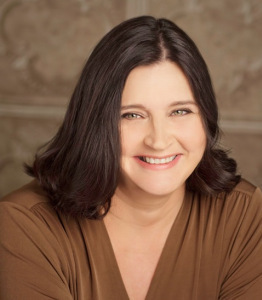
Michaela MacColl. (Photo by Melani Lust.)
Michaela MacColl attended Vassar College and Yale University, earning degrees in multi-disciplinary history. Unfortunately, it took her 20 years before she realized she was learning how to write historical fiction. Her favorite stories are the ones she finds about the childhood experiences of famous people. She and her family live in Connecticut, but she will travel at the drop of hat to do local research. So far her travels have taken her to London and Florence and Amherst, Massachussetts. ALWAYS EMILY (Chronicle, 2014) is her latest novel in her literary mystery series.
For more information about Michaela and her newest novel, Always Emily, please visit www.michaelamaccoll.com. To see all of her novels from Chronicle, visit www.chroniclebooks.com/michaelamaccoll.





International Women’s Week: Guest Post from Heather Long: International Women’s Week: Girls Can’t? Really?
One of the best aspects of being a romance writer is that I get to write about men and women who interest me. Sure we have a lot of archetypes to pull from, but the truth is every one is unique—women come in all shapes, sizes, talents, and more. As a writer, it doesn’t matter what others “think” a character can or can’t do, I’m the final arbiter. I believe we are all capable of greatness, but it’s up to us to discover where we find that greatness.
The best example of this ever came in a recent commercial for Cover Girl.
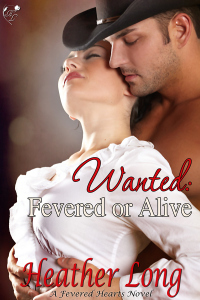
Heather Long, 2014.
Their #GirlsCan spot is so poignantly perfect and I think it’s the best summary for what women “can” do no matter what they are told they “can’t.” It’s the credibility and the confidence of the women in this ad that really sell it from Ellen DeGeneres to Katy Perry to Queen Latifah and Pink. They were told “you can’t” and they proved all the naysayers wrong.
For me, I like being told what I “can’t” do, because I will do my best to prove that yes, I can. In that same vein, I want to share with you my latest release, WANTED: FEVERED OR ALIVE. The heroine, Olivia, is blind and so many of the characters in the book treat her like an invalid because they aren’t sure what she can do—everyone that is, except for the man who loves her.
So, ladies, remember the next time someone tells you that you can’t—that you absolutely can.
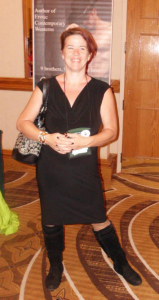
Heather Long.
National bestselling author, Heather Long, likes long walks in the park, science fiction, superheroes, Marines, and men who aren’t douche bags. Her books are filled with heroes and heroines tangled in romance as hot as Texas summertime. From paranormal historical westerns to contemporary military romance, Heather might switch genres, but one thing is true in all of her stories—her characters drive the books. When she’s not wrangling her menagerie of animals, she devotes her time to family and friends she considers family. She believes if you like your heroes so real you could lick the grit off their chest, and your heroines so likable, you’re sure you’ve been friends with women just like them, you’ll enjoy her worlds as much as she does.
Website: http://www.heatherlong.net
Twitter: http://www.twitter.com/HVLong
Facebook: http://www.facebook.com/HeatherLongAuthor





March 3, 2014
International Women’s Week: Guest Post from Brigid McConville: Mothers, Wherever They Live
Birth can appear very different in different parts of the world. In some countries we give birth safely between the white walls of hospital surrounded by medics and machines. In others, relatives and neighbours will circle the birthing woman, singing in the dark of a hut, far from medical help.
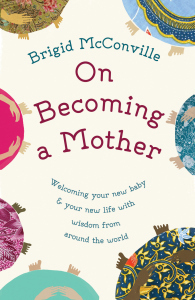
Oneworld Publications, April 2014.
But the woman at the centre of the picture – wherever she lives – is undertaking the same phenomenal journey to the edge of existence and back.
In the USA, the smiling image of her safe return, babe in arms, is sent to waiting relative and friends via her partner’s phone. In less high tech places, the good news is spread house to house by delighted relatives, or solemnly announced to Earth’s four winds by an Elder of the family.
But everywhere there is relief and joy. She has returned – bringing a new family member – and she has become a mother. Now, she and her newborn need rest, nourishment, love and affection. Everywhere, friends and relatives want to visit. They bring food, gifts and good wishes. They embrace mother and child, offering wisdom and support as the child embarks on his or her first feed, first bath, first steps…
Of course it is not always like this. As a journalist covering women’s health and rights, I had discovered to my horror that childbirth remains the biggest killer of young women in many parts of Africa and Asia. How could this be when in Europe (where I live) deaths in childbirth are largely a thing of the past?
Frustrated by the apparent inertia and silence about this at international level, I was delighted to discover the grassroots network of activists across Africa and Asia, known as the White Ribbon Alliance. At last, here were people who really knew the problems of their own communities, and who knew how to fix them! And here were the voices of women and their families, crying out to be heard.
The stories of course were terribly sad – still are. But they also demanded urgent action; 99 per cent of deaths in childhood happen in the so-called developing world and almost all can be prevented. I began working with White Ribbon Alliance because I saw that a united coalition of advocates from all walks of life, speaking with one voice to their own governments, have the best chance of bringing sustainable change for women.
And recently we have seen historic improvements, with deaths in childbirth down by half. Yes, half! That proves it can be done, and now it must be done – for the other half!
The time was right to emphasise the positive and I began gathering stories about all the customs and practices which support pregnant women, new mothers and their newborns. The same advocates who spoke with such passion to their own political leaders, urging them to keep the promises made on women’s health, were quick to tell me of the celebrations and traditions which cherish and protect mothers in their own cultures. There is a world of wisdom out there, and we can learn so much from women if only they have an opportunity to be heard.
In North America and increasingly Europe, the baby shower is one such celebration. But did you know that myriad other cultures have their own traditional versions? Across Asia, when pregnancy is announced at (a relatively safe) seven months, relatives hold a party for the mother to be. Guests bring her favourite foods, and presents of clothing and jewellery, filing past to place their gifts on her lap and whisper promises of support and encouragement in her ear.
In Africa – overturning the stereotype – women told me how their cultures ensure that new mothers are treated like queens, with the best food set aside and often cooked by their husbands. For forty days after the birth, new mothers in Chagga culture (Tanzania’s Kilimanjaro region) are looked after hand and foot with no work to do other than breastfeeding. In parts of Somalia, men are banished for this time – until after forty days when they return for a ‘second wedding’ celebration.
And when the mother emerges again into the world, often after a time of seclusion (which can also help to safeguard against infections), she parades with her baby through the community, her new dress or sash proclaiming her status in the community, a position of respect and honour.
Again, the variety – yet commonality – of the ceremonies which name and welcome babies was a revelation to me. The urge to protect the newborn from evil, to usher the new child into the community, to pledge community support for the mother and her family, is universal – whether the ceremony involves a priest with holy water or special offerings to the gods.
It remains true that conflict and poverty put paid to all the best traditions, and that far too many women still have no access to the C sections, blood banks, medicines and trained staff which can save their lives when things do go wrong.
But writing this book, in support of White Ribbon Alliance, reinforces my view that we must (and we can) make birth safer for all women. Birth is a time of great vulnerability, but also potentially of great strength, in the lives of women. It is also a moment when every society’s assumptions about women and our true value come into sharp focus. So if we can challenge and alter unequal power relations for the better, we can not only make sure that individual mothers are safer, we can create a healthier, safer world.
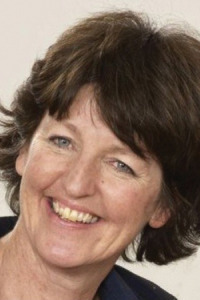
Brigid McConville.
Brigid McConville is Director of the White Ribbon Alliance. An award-winning journalist and filmmaker, she is the editor of the new collection, ON BECOMING A MOTHER, and the author most recently of STORIES OF MOTHERS LOST. When she is not travelling the world to ensure WRA’s mission that pregnancy and childbirth are safe for all, she splits her time between London and the West Country.






